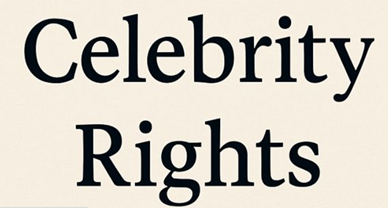YouTube Redecorates It’s Copyright Claim Policies
Copyright is an exclusive right that is vested in the original creator or owner of the work. The original creator receives exclusive rights pertaining to the expression of his ideas enabling him to make copies, distribute, license, and otherwise exploit the literary, musical, or artistic work created by him, whether in print, audio, or video form and reap commercial benefits derived from the work.
The copyright on work remains for either the lifetime of the author plus sixty years from the beginning of the calendar year next following the year in which the author dies or until sixty years from the beginning of the calendar years next following the year in which the work is first published in India, expiry of which the works eventually lose their copyright protection and fall into the “public domain,” and hence become freely exploitable. The works that fall into the public domain are regulated in different ways around the world. When the work is still under copyright protection the provision enabling the ‘fair use’ doctrine authorizes the public at large to reuse the copyright-protected material under certain instances and up to an extent without even getting permission from the copyright owner.
Copyright law appears to be quite clear in protecting the rights of an original author but in reality, it has numerous unexplained layers that leave it open to assumptions. When YouTube is spoken of in reference to the protection of the rights of original creators, the most common question that crops up is whether or not a creator can use someone else’s work in their video without licensing it. Over the years, YouTube has become the principal website for creating, broadcasting, and viewing content with a user count of over a billion users. Consequently, it has turned into a breeding ground for copyright infringers. Though creating and uploading original content is advisable, content creators tend to overlook it and resort to infringing to get easy views on their channel.
While YouTube itself isn’t directly responsible for the content that users upload or its copyright violation, it derives responsibility from the fact that it provides for a platform and hence, has to ensure the protection of copyrighted content through strict policies, for instance, copyright strikes, Content ID and Copyright Verification Program.
It also provides users with a set of ‘fair use’ guidelines to educate its user about how much-copyrighted content can be used in theirs. However, over the years the policies by YouTube has been criticized for favoring corporations and unfair claims on videos.
The past few months have really been difficult for YouTube creators as they profess to be inundated with numerous manual claims from Copyright owners even for just a second or two of a song. YouTube has responded by revising its policies to require more specific information from copyright holders about any alleged infringement and introduce new tools to help creators respond to such disputes.
On and after 9th July 2019 the Copyright owners are required to provide exact timestamps for all-new manual Content ID claims. This is with the aim to inform creators of the exact portion of time for which their video is being claimed. This applies to the copyright-infringement claims that are submitted manually under YouTube’s Content ID system but not to automatically flagged contents by their protection algorithm.
YouTube has promised to be more alert in policing fake copyright claims. YouTube will judge the precision of the timestamps and Copyright owners who fail to render precise data too frequently will be revoked of their access to manual claims.
To enhance its protection policies, new editing tools such as “Mute Song”,“ Replace Song” etc. to do away with manually claimed content in videos leading to automatic release of the claim are introduced by YouTube. On one hand, “Mute Song,” will enable a creator to mute the audio in the time-stamped segment that is being claimed for infringement on the other hand, “Replace Song,” will swap out the music with one of the free-to-use songs from the YouTube Audio Library. Another additional feature that it still is working on is the improved Trim feature to add an option built into YouTube Studio’s Copyright Info page letting creators clip off claimed content with a click.
When creators on YouTube receive a Copyright claim, they have three ways out: First, they can withdraw themselves from doing anything, which will get their creation suspended from the platform. Second, dispute the claim, and third, opt to share ad revenue generated from the disputed material with the claimant. These enhancements in the system have been made by YouTube two days prior to their 10th annual VidCon US creator and fan convention.
All these actions have been taken to draw the right balance between copyright owners and creators.
Author: Debopriya Mukherjee, B.A., LLB (H), 5th year, Intern at IP and Legal Filings and can be reached at support@ipandlegalfilings.com.


